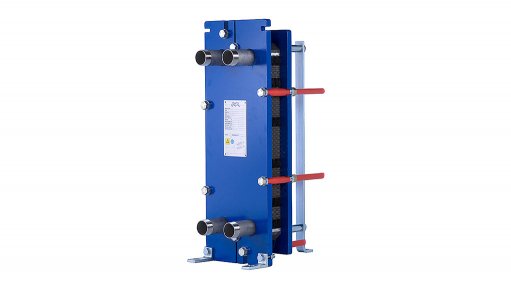
WIDELY USED Alfa Laval heat exchangers are being used locally in, for example, food and beverage, engineering and manufacturing sectors
Fluid-handling design and supply company Mechinox South Africa (SA) has recorded a downturn in the demand for custom-built shell and tube heat exchangers, while more energy efficient shell and plate, as well as modified-plate and modified-frame- plate, heat exchangers have gained popularity.
Mechinox SA sales engineer Daniel de Beer tells Engineering News this trend is largely the result of companies wanting to reduce electricity bills.
He says the Department of Trade and Industry’s implementation of the SANS 347:2012 regulation for categorisation and conformity assessment criteria of all pressure equipment has increased the stringencies on the manufacture of shell and tube heat exchangers.
“Heat exchangers are essentially pressure vessels. Therefore, the regulation requires that every pressure-holding vessel that falls into Category 2 or higher has to be signed off by a professional engineer.”
He says that, in most cases, all welding on pressure vessels has to be undertaken by a ‘coded’ welder, who is a qualified welding artisan that has passed a weld qualification procedure.
“The pressure vessel must be X-ray-tested and a nondestructive test performed to meet SANS 347:2012 requirements. These processes add significant costs to the manufacturing process, thereby increasing pressure on companies to produce more efficient and cost-effective alternatives to their existing heat exchanger product offering,” De Beer states.
Nonetheless, he says the company recorded positive sales on its heat exchanger offering, largely owing to its range of plate- and frame-type heat exchangers.
He adds that Mechinox SA’s range of Alfa Laval heat exchangers is being used locally, for example, in the food and beverage, engineering and manufacturing sectors.
Industrial air- conditioning solutions providers and hot-water system providers for buildings are increasingly using our heat exchangers for energy recovery on condenser circuits in factories and hydraulic oil coolers, as they can handle pressures of up to 24 bar,” De Beer concludes.